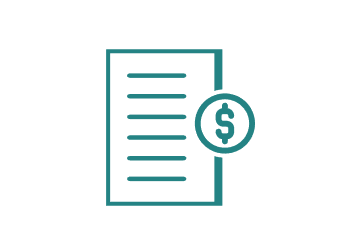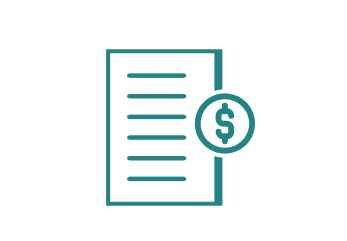Staying ahead of your company’s tax obligations has more benefits than simply avoiding IRS penalties. By proactively managing your estimated tax payments, you can achieve peace of mind and even a healthier cash flow by eliminating large lump sum payments on tax day and spreading tax obligations across the year. This comprehensive guide will walk you through the process of calculating and marking when estimated tax payments are due in 2024.
Quarterly Tax Payments Are Essential in the Current Workforce Landscape
Estimated taxes are simply a method of paying tax on income that’s not subject to withholding, which applies to both self-employed individuals and regular businesses. This includes earnings from self-employment, business income, dividends, alimony and more. In today’s landscape of work, where freelance roles and remote positions are becoming a norm, understanding quarterly tax payments is more pertinent than ever. For small to large businesses, quarterly tax payments are equally crucial to stay in good standing with the IRS.
Who Needs to Pay Estimated Taxes?
You generally need to make estimated tax payments on income not subject to withholding if:
- You expect to owe $1,000 or more in taxes as an individual, including sole proprietors, partners and S corporation shareholders.
- You expect to owe $500 or more as a corporation.
You may also need to pay estimated taxes if you receive income from the following sources:
- Self-employment income
- Investment income, such as interest, dividends, and capital gains
- Business profits
- Partnership income
- S corporation income
- Certain types of investment income earned by the business
- Rental income
- And more
If you receive salaries or wages and your withholding does not cover your expected tax liability, you may need to make estimated tax payments or adjust your withholding.
Common Misconceptions About Estimated Tax Payments
Don’t fall trap to common myths about quarterly tax payments. Know the full requirements for paying your taxes correctly.
Myth one: Estimated tax payments are optional.
Fact: If you expect to at or beyond the income threshold during the year, you are required to make estimated tax payments to avoid penalties.
Myth two: You only need to make estimated tax payments if you’re self-employed.
Fact: While self-employed individuals often need to make estimated tax payments, they may also be required for other types of income not subject to withholding, such as investment income or rental income.
Myth three: You can wait until tax season to pay your estimated taxes.
Fact: Estimated tax payments are due quarterly throughout the year. Waiting until tax season to pay can result in penalties and interest charges.
Myth four: Estimated tax payments are based on your previous year’s income.
Fact: While your previous year’s tax return can serve as a guide, estimated tax payments should be based on your expected income for the current year.
When Are Estimated Taxes Due in 2024? Key Deadlines
The IRS mandates that estimated taxes be paid quarterly. Mark your calendar for these deadlines in 2024, based on income from the following periods:
- First quarter (January 1 – March 31): Due April 15, 2024
- Second quarter (April 1 – May 31): Due June 17, 2024
- Third quarter (June 1 – August 31): Due September 16, 2024
- Fourth quarter (September 1 – December 31): Due January 15, 2025
Special rules apply to certain groups, like farmers and fishermen, who have different payment schedules, and individuals with uneven income streams, who may adjust their payments to avoid penalties.
How to Calculate Your Estimated Taxes
Calculating your quarterly tax payments involves estimating your annual income, identifying applicable deductions and credits and using Form 1040-ES or Form 1120-W for corporations.
Here’s a step-by-step process to calculate your estimated taxes:
Estimate your company’s taxable income for the year
- For sole proprietors, this includes income from your business activities, which is reported on Schedule C of your individual tax return.
- For other business entities, such as partnerships, S corporations, and C corporations, this includes business profits, rental income, and other taxable income sources.
Subtract your expected business deductions to determine your taxable income
- For sole proprietors, this includes business expenses such as rent, supplies, equipment, and other allowable deductions reported on Schedule C.
- For other business entities, this includes operating expenses, salaries, depreciation, and other allowable deductions specific to your business structure.
Calculate your expected taxes using the current year’s tax rates
- Sole proprietors should use the individual tax brackets, as their business income is reported on their personal tax return.
- Partnerships and S corporations typically pass through income to their partners or shareholders, who then pay taxes on their individual returns.
- C corporations should use the corporate tax rates.
Subtract any expected tax credits
- Individuals may be eligible for credits such as the Earned Income Tax Credit, Child Tax Credit, or education credits.
- Companies may qualify for credits such as the Research and Development (R&D) Tax Credit or the Work Opportunity Tax Credit.
Divide the resulting amount by four to determine your quarterly estimated tax payments
How to Avoid Underpayment Penalties
Failure to meet estimated tax payments typically leads to penalties and interest charges. Underpayment is one of those failures, but leveraging safe harbor calculations can help you avoid this pitfall.
To avoid underpayment penalties, aim to pay at least 90% of your current year’s tax liability or 100% of your previous year’s taxes (110% if your AGI was more than $150,000). You can also use the annualized income installment method if your income fluctuates throughout the year.
How to Pay Your Estimated Taxes
You can pay your estimated taxes using one of the following methods:
- Electronic Federal Tax Payment System (EFTPS): This free service allows you to pay your estimated taxes online or by phone.
- IRS Direct Pay: Use this secure service to pay your taxes directly from your checking or savings account with respect to your entity type.
- Payment vouchers: Different payment vouchers exist for different business entity types.
- Credit or debit card: You can pay your estimated taxes using a credit or debit card, although processing fees may apply.
Adaptive Strategies for Proactive Quarterly Payment Planning
Adapting your approach to quarterly tax payments will make it easier to avoid last-minute rushes or one-time, major lump sum payments. Here are some strategies to start employing today:
- Use apps designed to help you set aside money throughout the year.
- Adjust your withholding to prevent surprises at tax time.
- Employ a tax professional for personalized advice tailored to your financial situation and industry, ensuring you’re taking advantage of all available tax strategies.
- Keep accurate records of all income and expenses throughout the year to simplify the process of calculating your estimated tax payments.
- Consider setting aside a portion of each payment you receive from clients to cover your estimated tax obligations.
- If you’re a sole proprietor, partner or S corporation shareholder, you may need to make estimated tax payments for both income tax and self-employment tax.
- If your income fluctuates throughout the year, consider using the annualized income installment method to calculate your estimated tax payments.
Navigating Pandemic and Post-Pandemic Tax Changes
The ongoing effects of the COVID-19 pandemic continue to shape tax regulations, with new changes anticipated for 2024. Ongoing changes in tax law can change your tax liability and, in turn, your estimated taxes. Work with a CPA or tax preparer who has knowledge of new tax laws to help your business navigate your obligations.
Make Tax Planning Easier
Estimated tax payments, while complex, are a crucial component of financial planning. By breaking down the process into manageable steps, and staying informed on tax law changes, you can navigate 2024 estimated taxes with confidence.
For more in-depth tax support, use the services of a vetted tax professional. Paro matches businesses with elite CPAs, enrolled agents and tax preparers who can help you both file your taxes and guide your tax planning to increase profitability.








